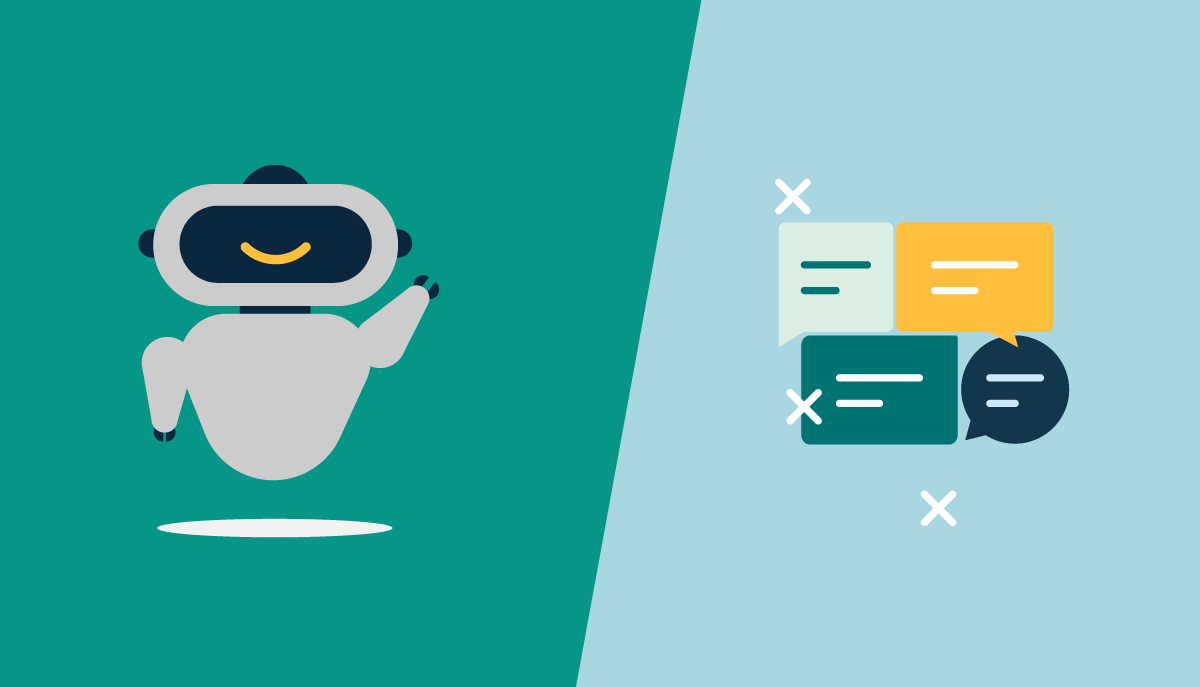AI chatbots are the hot topic on everyone’s lips at the moment, but have you ever wondered how these chatbots work? We will explore the technology behind the AI bots and discuss their great potential but also their limitations and give you a deeper understanding of these potent digital assets.
Definition of an AI Chatbot
Simply put, a chatbot is a program that engages in conversations with humans using Artificial Intelligence (AI) technologies such as Natural Language Understanding (NLU) and Machine Learning. Think of an AI chatbot as a virtual assistant that you can talk with in a two-way dialogue. It can understand human language, interpret your questions and respond to them in a meaningful way. Now let’s delve behind the scenes to see how they work.
How AI Chatbots Work
AI chatbots work with a combination of technologies that gel together to produce a multi-layered system.
Natural Language Processing (NLP): At a basic level, Natural Language Processing (NLP) is a technology that helps computers understand and process human language. It’s used by chatbots and AI programs to understand the words and phrases that people use in a conversation.
NLP can be broken down into a few different tasks:
- Tokenization: The process of breaking up a sentence into individual words or phrases.
- Parsing and part of speech tagging: Understanding the structure of a sentence and the role of each word. For example, figuring out which words are the subject and which are the verb, etc.
- Intent Recognition: This discovers the intent behind what a person is saying; what they want or want to do.
- Entity Gathering: Identifying and classifying entities like dates, postal codes, amounts, etc. out of a longer text.
- Sentiment Analysis: Determining the sentiment expressed by a person during the conversation.
Together these steps allow the AI to understand the meaning behind the sentences and allow it to respond properly. The more data it has, and the more advanced the technology is, the better it can understand and generate human language.

Machine Learning (ML): Machine learning is like a set of rules or instructions that the chatbot follows (the algorithms), to learn from data so it can make decisions without being explicitly programmed to do so. These rules help the chatbot understand the words in a conversation.
A chatbot also has a way to remember things, and every time the bot has a conversation with someone, it stores the information in its memory to build and grow in its language use. As the chatbot talks to more and more people, it begins to understand more words and phrases, and it can respond more accurately. It’s the same as when we are learning to speak a new language – the more you practice talking to people, the better you get at it.
There are many different types of machine learning algorithms, but they generally fall into two categories:
- Supervised learning: In supervised learning, the algorithm is given a dataset with input-output pairs and learns from these. For example, a supervised learning algorithm might be trained on a dataset of images labeled with the objects that appear in them, with the goal of learning to identify those objects in new images.
- Unsupervised learning: In unsupervised learning, the algorithm is given a dataset without any labels or output variables. The goal is to find patterns or structures in the data, such as grouping similar examples together. For example, an unsupervised learning algorithm might be used to group customers into different segments based on their buying history.
Although machine learning technology is at a sophisticated level, ML algorithms do have limitations and are not always 100% accurate.
Neural linguistics in AI: Neural Linguistics is a field of study that combines Natural Language Processing and neural networks to enable computers to understand and then generate human language. It plays a key role in AI chatbots as it allows them to converse with people in a similar way to how humans would do it. It provides the AI with the tools to understand the context, intent, and sentiment behind what a person says, which is important for producing natural-sounding responses.

Large Language Models (LLM): Large language models are a type of AI that is trained to understand and generate natural language text. They are based on deep learning techniques, which is a method of training a neural network using a large dataset. The basic idea behind an LLM is to give the AI access to a huge dataset of text, for example, books and websites. The AI then uses this data to learn the patterns and relationships between the words and phrases. This process is called “training the model”. The more data the model is trained on, the more accurate and sophisticated it can become. Also, you can continue to fine-tune it with new data to keep improving the model.
Conclusion
AI chatbots are getting smarter and more useful all the time. As technology improves, these chatbots are better able to understand human language and respond in ways that are truly helpful. At the moment, they’re being used effectively in customer service, as personal digital assistants, and e-commerce. But in the future, they’ll be more powerful and will play a bigger role in automation, so people can focus on the more important activities. All things considered, the future of chatbots is looking bright.

